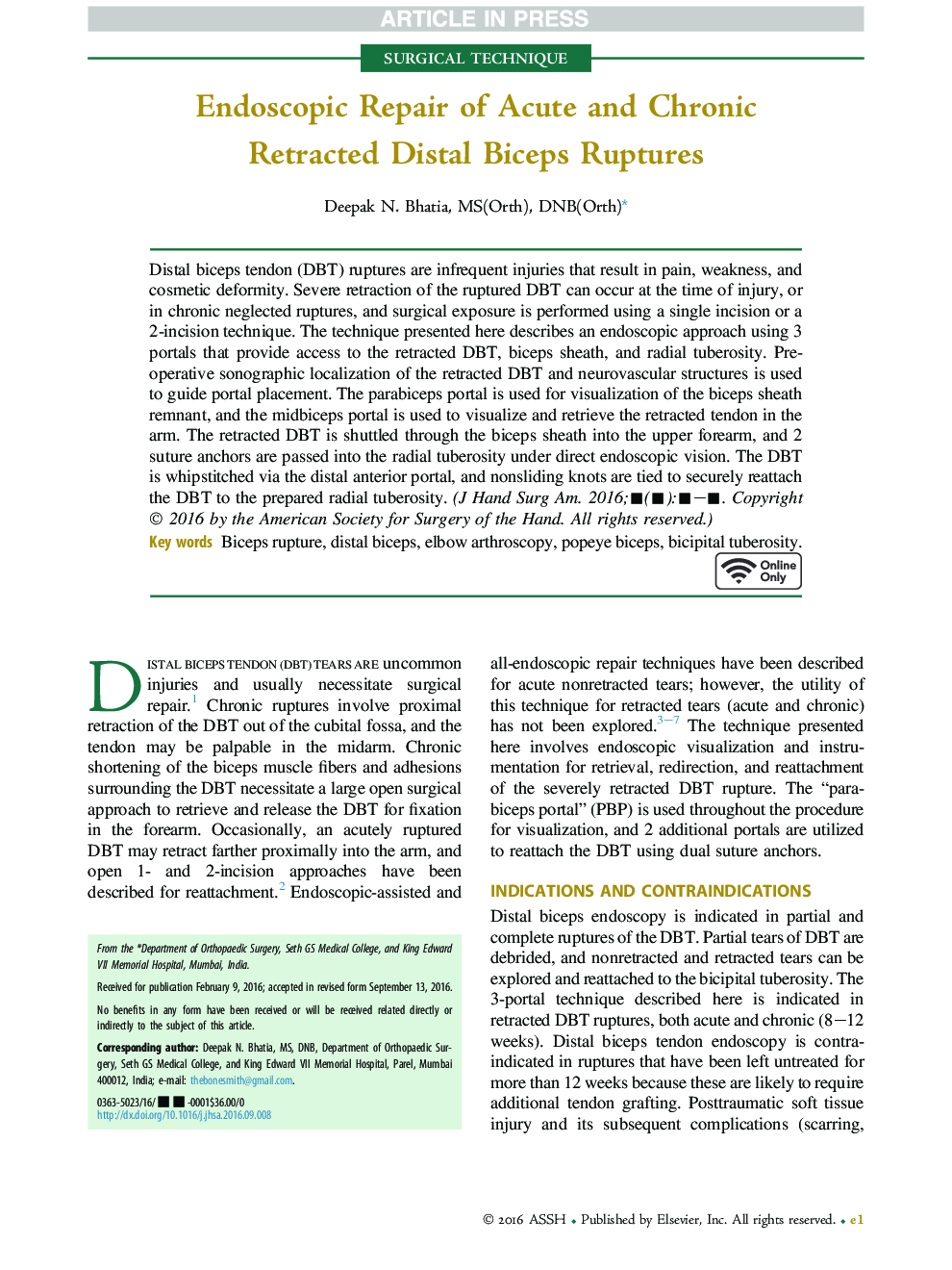| Article ID | Journal | Published Year | Pages | File Type |
|---|---|---|---|---|
| 5709649 | The Journal of Hand Surgery | 2016 | 7 Pages |
Abstract
Distal biceps tendon (DBT) ruptures are infrequent injuries that result in pain, weakness, and cosmetic deformity. Severe retraction of the ruptured DBT can occur at the time of injury, or in chronic neglected ruptures, and surgical exposure is performed using a single incision or a 2-incision technique. The technique presented here describes an endoscopic approach using 3 portals that provide access to the retracted DBT, biceps sheath, and radial tuberosity. Preoperative sonographic localization of the retracted DBT and neurovascular structures is used to guide portal placement. The parabiceps portal is used for visualization of the biceps sheath remnant, and the midbiceps portal is used to visualize and retrieve the retracted tendon in the arm. The retracted DBT is shuttled through the biceps sheath into the upper forearm, and 2 suture anchors are passed into the radial tuberosity under direct endoscopic vision. The DBT is whipstitched via the distal anterior portal, and nonsliding knots are tied to securely reattach the DBT to the prepared radial tuberosity.
Related Topics
Health Sciences
Medicine and Dentistry
Orthopedics, Sports Medicine and Rehabilitation
Authors
Deepak N. MS(Orth), DNB(Orth),
